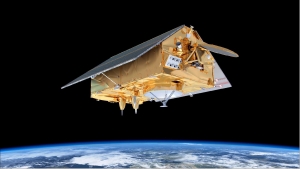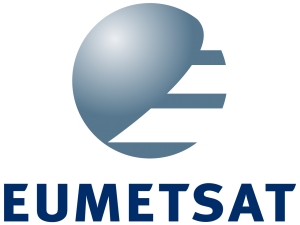Displaying items by tag: JasonCS
Copernicus: Sentinel-6 - Michael Freilich Mission - formerly Jason-CS Mission
Jason-CS is the second component of the hybrid solution (Jason-3 + Jason-CS) agreed to in 2009. Jason-CS will ensure continuity with Jason-3 to guarantee adequate overlap with Jason-3. At least two satellites with a 7 years lifetime each (5 years + 2 years consumables) are planned to give time before new technologies such as swath interferometry (SWOT mission) can be considered as operational. 1) 2)
The Jason-CS satellite will carry a radar altimeter package to continue the high-precision, low-inclination altimetry missions of Jason-2 and -3. It will complement the high-inclination measurements on Sentinel-3 to obtain high-precision global sea-surface topography for the marine and climate user community.
EUMETSAT
The European Organisation for the Exploitation of Meteorological Satellites (EUMETSAT) is an intergovernmental organisation created through an international convention agreed by a current total of 30 European Member States.
EUMETSAT's primary objective is to establish, maintain and exploit European systems of operational meteorological satellites. EUMETSAT is responsible for the launch and operation of the satellites and for delivering satellite data to end-users as well as contributing to the operational monitoring of climate and the detection of global climate changes.
The activities of EUMETSAT contribute to a global meteorological satellite observing system coordinated with other space-faring nations.
Satellite observations are an essential input to numerical weather prediction systems and also assist the human forecaster in the diagnosis of potentially hazardous weather developments. Of growing importance is the capacity of weather satellites to gather long-term measurements from space in support of climate change studies.
EUMETSAT is not part of the European Union, but became a signatory to the International Charter on Space and Major Disasters in 2012, thus providing for the global charitable use of its space assets.[1]
- public organisation
- Europe
- mission operations
- satellite operator
- meteorology
- Copernicus (EO program)
- Meteosat Third Generation
- Meteosat
- Meteosat Second Generation
- MTG
- MSG
- MTP
- Meteosat Transition Phase
- METOP
- METOP SG
- Sentinel 1
- Sentinel 2 satellite
- Sentinel 2
- Sentinel 3
- Sentinel 4
- sentinel 5P
- sentinel 5
- Sentinel 6
- JasonCS
- Jason 2
- Jason 3
- EPS
- EPS_SG
- NOAA


